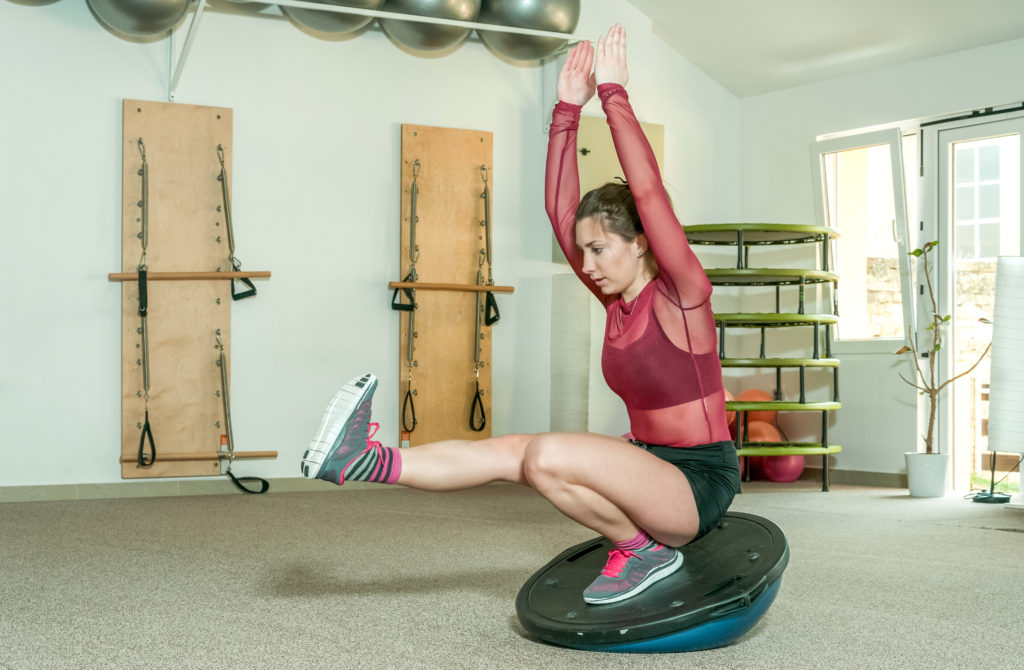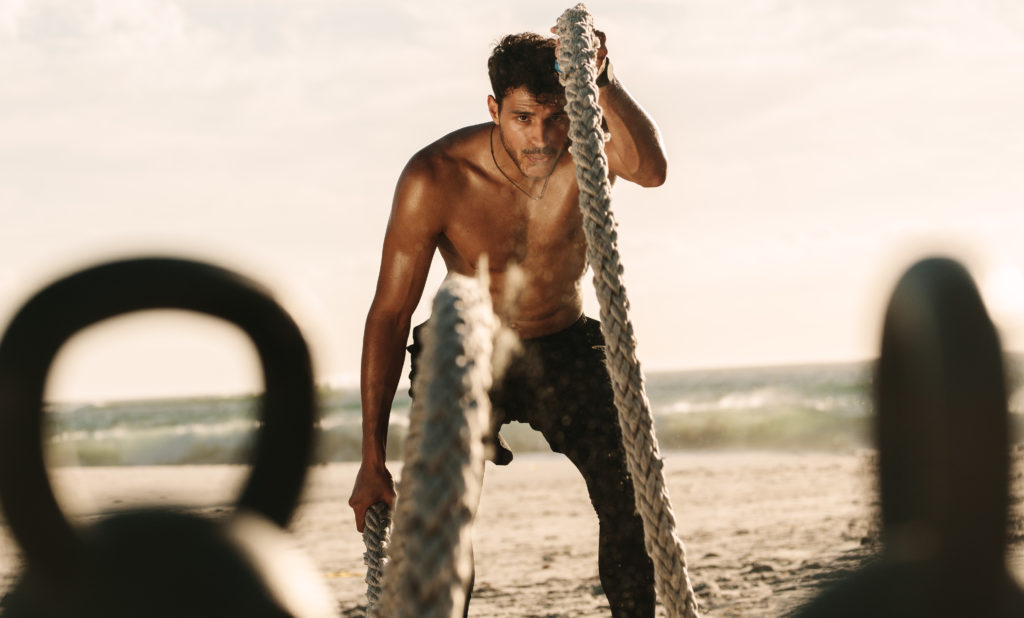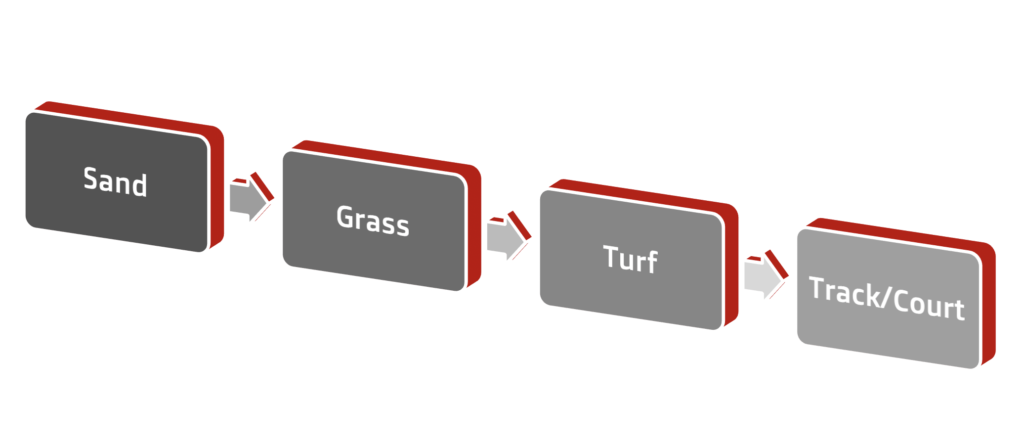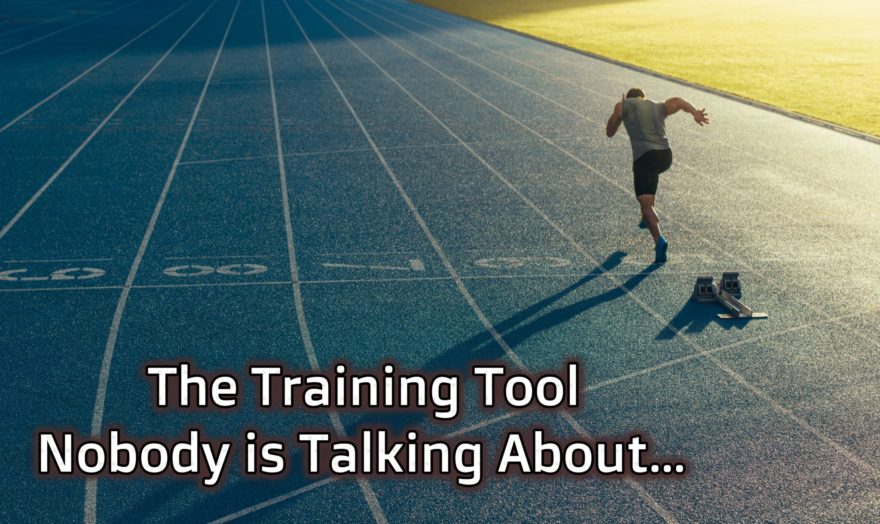Note from Zac: There is a ton of BS out there when it comes to building speed, power, and all things performance. Is training in sand one of those instances? That’s where I enlisted someone who knows WAY more about sprinting and getting peeps fast—Hunter Charneski.
Hunter is one of those guys who is always learning, always evolving, and the perfect guy to take an honest look at whether or not sand training can be a useful.
The answer may surprise you.
Table of Contents
A performance rant
I simply cannot hold it in any longer, so I apologize for the rant about to ensue.
I have to do this because there are so many gadgets, gimmicks and gurus out there doing nothing but wasting numerous athletes’ time and money. It seems as though they have forgotten, (or worse, neglected) the most important training tool an athlete has – the ground!
On my way home from my private training facility yesterday, I had received a product catalog in the mail. Within the first couple of pages, all I saw were Bosu Balls, Terra-Core platforms, and Core Boards. You have got to be kidding me! And folks wonder why I look much older than 28?

But it did not stop there, I open the explore page on Instagram to catch up on a few of those I follow in this industry. Much to my dismay, a video surfaced of several new NFL draftees “speed training” in sand. Worse yet, the moron leading through this abomination of a workout championing their efforts. I thought I was going to blow a proverbial gasket.
Why not train in sand?
Why are we still training our athletes in sand and/or on unstable surfaces? If you have read any of Dr. Anatoliy Bondarchuk’s work on the Law of Dynamic Correspondence, you know that these methods and means are laughable.
The Law of Dynamic Correspondence clearly states:
“…it must mimic (in part, or in whole) the sporting activity to transfer to the sporting activity.”
It is objective, it is science, Dr. Bondarchuk has given us the blueprint, why can’t we follow it?
In almost all team sports, athletes train on either hard, stable surfaces (turf or court) or soft, stable surfaces (grass). On my visit to the Arizona Cardinals practice facility to meet with head physical preparation coach, Buddy Morris, he explained research that has shown training on unstable surfaces diminish force and power outputs and inhibit the development of speed. We all know speed sits alone at the top as thee most important biomotor ability. (CLICK HERE TO HAVE MY FREE BOOK! on speed training!)
These athletes are not beach volleyball players (no offense). Sand and these other gadgets do nothing for force application, why are we still exposing our athletes to these “stimuli”?
Every action as an equal and opposite reaction, I believe someone named, “Newton” wrote that. These surfaces destroy the coveted elastic-reactive response in athletes and dissipate forces. Those elastic qualities are essential to enhance and develop power, speed, and force outputs. Unless the athlete(s) is being slowly reintroduced into training, is following a strict RTP (return-to-play) protocol, or plays only when an earthquake is occurring, leave the sand alone.

One thing that Buddy Morris said to me during my time with him that I will never forget is when he used Usain Bolt as his “case study” if you will. He explained to me that Usain Bolt is the fastest man this world has ever seen, and Jamaica is the best sprint program in the world – period. He continued (with the use of a few “F” bombs) that Jamaica is an island in the middle of the ocean with plenty of beaches and plenty of sand. He has never seen a YouTube training video, Instagram, Facebook, etc. of Usain Bolt training in sand. He is always either running on a grass field or hill, (soft, stable) or a track (hard, stable).
When is training on sand appropriate?
Now, it isn’t my intention to sound like the ultimate heel, but it is my intention to make sure you are aware that while sand should not be the “default” option, it does have value in specific situations. Two situations in particular that come to mind, but not limited to, are:
- Reintroduction to training.
- RTP (return-to-play) protocols.
Reintroduction to Training
I am 100% OK with training in sand for a very brief segment of time if the athlete has just finished a long season and is “easing” back into training.
When training in sand, every movement, propulsion, and the like will be a muscular endeavor, not an elastic one. This will prove beneficial for the athlete as their tissue may not be ready for the violent, reactive responses a harder surface presents.
Also, as Charlie Francis has said, when training on a softer surface in this case, he believed it actually strengthened the tendons due to the amount of blood flow to the area because of the muscular efforts being so substantial.
Now, just like anything else in training, I believe a progression should be followed for the surface the athletes train on in this order:

Return-to-play
As someone who has literally ripped their body apart due to the harsh activity that is sprinting, you can rest assured that I know what the hell I’m talking about when it comes to training back to health.
A torn plantar fascia, gastroc, and Achilles (partially) doesn’t take too well to a hard, stable surface. The force-dispersion the sandpit provides is a wonderful option to begin the healing process immediately rather than being in an effing boot for 6-8 weeks.
Now, is one going to let it rip just because the surface is soft? Hell no. If you, or any or the athletes you work with, suffer a lower-leg injury, this is a brutally simple progression to promote healing and get back to playing sooner rather than later
- Use the same surface progression above
- Perform the drills below multiple sets, reps, and distances for several days and progress to the next surface to promote positive healing adaptations.
Ankle Step Overs
Shin Step-Overs
Runninng A’s
Summary
The ground is your friend, it is your own personal force-plate, use it. It can make you an extremely strong, powerful and reactive individual.
I am sure there will be those who will dispute this with me and claim that training in sand will enhance elastic-reactive responses in power/speed athletes. My only question for them would be, “How can you have an elastic-reactive response when forces dissipate and you get nothing back?”
Perhaps the ground is not sexy enough, it is not the latest novelty, it is not cutting edge. I am here to tell you, when things get fancy, fancy gets broken. Don’t take my word for it, Dr. Yuri Verkoshansky said it best, “There are no new exercises.”
Hunter Charneski Bio

Hunter is the owner/founder at Freak Faktory Barbell & Sports Performance, and the President of Charneski Power Coaching & Consulting
Hunter is a nationally recognized speed expert in the strength and conditioning industry. His passion for speed fuels his purpose to pay it forward to both today’s youth and coaches to better the industry and create true change.
Speed is a simple concept yet through a craving for novelty, has become bastardized to say the least. Hunter aims to provide an easy, practical, and effective way to harness the greatest performance enhancer known to sports. From program design to byproducts of faster running, no stone shall be left unturned!
Hunter received his Master’s Degree from California University of Pennsylvania. He is a Certified Strength and Conditioning Specialist (NSCA), Certified Advanced Physical Preparation Specialist (CPPS), Performance Enhancement Specialist (PES), Certified Speed Specialist (NASE), and Specialist in Fitness Nutrition (ISSA).
You can find Hunter on…
Instagram: @Hunter_Charneski
Twitter: @huntercharneski

